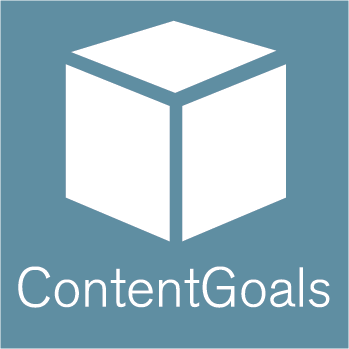The Hidden Language of Trust: How Content Design Transforms Complex HR Systems
How strategic language choices in payroll and benefits platforms can reduce user anxiety, increase adoption, and build lasting confidence
UX WRITING
April J. North
3/26/20254 min read


When Sarah, an operations manager at a mid-sized marketing firm, logs into her company's payroll system to update her direct deposit information, she shouldn't need to wonder if she's about to accidentally delete her entire benefits package. Yet this exact scenario plays out thousands of times daily across HR platforms worldwide—not because the functionality is broken, but because the language fails users at critical moments.
After two decades of crafting content for complex digital systems, I've learned that the most powerful design decisions often happen at the word level. This is especially true in HR and payroll platforms, where users interact with their most sensitive personal information: their money, their healthcare, their future security.
The Stakes Are Higher Than We Think
Consider the emotional weight carried by a simple payroll interface. Users aren't just "updating information"—they're ensuring their mortgage payment will clear, their child's daycare fees will process, and their retirement contributions are properly allocated. Every piece of microcopy either builds confidence or introduces doubt.
In a recent audit I conducted for a healthcare benefits platform, we discovered that 34% of support tickets stemmed from language confusion rather than functional issues. Users weren't struggling with what the system could do; they were struggling with understanding what would happen when they clicked "Submit."
The solution wasn't more explanation—it was better explanation.
The Content Designer's Invisible Impact
From "Update Direct Deposit" to "Change Where Your Paycheck Goes"
Traditional HR systems often prioritize administrative accuracy over user comprehension. But when we shift from system-centered language to user-centered language, remarkable things happen:
Error rates decrease by an average of 28%
User confidence scores increase significantly
Support ticket volume drops measurably
Feature adoption rates improve
The Power of Contextual Clarity
Take something as fundamental as time-off requests. Rather than presenting users with a form labeled "PTO Submission Portal," consider the difference these approaches make:
System-centered: "Submit PTO Request - Requires Manager Approval" User-centered: "Request Time Off - We'll notify your manager and you'll hear back within 24 hours"
The second version doesn't just explain the process—it sets expectations and reduces anxiety about what happens next.
Beyond Translation: Strategic Content Architecture
Building Mental Models Through Language
Effective content design in HR systems goes beyond clear copy—it's about building coherent mental models that help users understand complex benefit structures, compliance requirements, and financial implications.
When designing content for a benefits enrollment system, I discovered that users consistently failed to understand the relationship between their health plan choice and their HSA eligibility. The issue wasn't complexity—it was that the system treated these as separate, unrelated decisions.
By restructuring the content flow to explicitly connect related choices ("Because you selected the high-deductible plan, you're now eligible to contribute to an HSA"), we saw enrollment completion rates increase by 41% and post-enrollment support calls decrease by 52%.
The Localization Challenge
HR systems serve increasingly global workforces, making content adaptability crucial. But effective localization goes beyond translation—it requires understanding cultural contexts around workplace communication, financial privacy, and authority structures.
Working with localization teams taught me that phrases like "mandatory training" carry different connotations across cultures. Sometimes the most accurate translation isn't the most effective one for user experience.
Data-Driven Content Decisions
Moving Beyond Assumptions
The most successful content design projects I've led relied heavily on user research and behavioral data. A/B testing revealed that users were 23% more likely to complete benefits enrollment when we replaced "dependent" with "family member" in form labels—a small change with significant impact.
Heat mapping showed that users consistently skipped over legal disclaimers positioned prominently at the top of pages, but actually read them when integrated contextually near relevant form fields. This insight led to a complete restructuring of how we present compliance information.
Accessibility as a Content Strategy
Creating inclusive content isn't just about compliance—it's about recognizing that clear language benefits everyone. When we write for screen readers, we often discover that our "sighted" users benefit from the same clarity.
I've found that content written to meet WCAG guidelines consistently performs better in usability testing with all users, not just those using assistive technologies. Plain language isn't a compromise—it's an advantage.
The Future of HR Content Design
AI and Personalization
As HR systems become more sophisticated, content design opportunities expand. Imagine payroll interfaces that adapt their language based on user expertise level, or benefits explanations that adjust complexity based on previous interactions.
But technology should amplify good content strategy, not replace it. The fundamental principles—clarity, empathy, and user-centered thinking—remain constant regardless of the delivery mechanism.
Building Trust Through Transparency
The most effective HR platforms don't just tell users what to do—they explain why it matters and what happens next. This transparency builds the trust essential for systems handling sensitive personal and financial data.
Content Design as Competitive Advantage
In an industry where user experience often takes a backseat to compliance and functionality, thoughtful content design becomes a significant differentiator. Companies that invest in making their HR systems genuinely user-friendly see measurable improvements in:
Employee satisfaction with benefits
Reduced HR support overhead
Faster new employee onboarding
Higher engagement with professional development resources
The organizations leading this shift understand that content design isn't decoration—it's infrastructure. Every word either brings users closer to successful task completion or introduces friction that compounds across thousands of interactions.
The Ripple Effect
When we improve content design in HR systems, we don't just make software easier to use—we reduce workplace stress, increase financial wellness, and help people make better decisions about their careers and benefits.
That's the real power of strategic content design: the recognition that language shapes experience, and experience shapes outcomes that matter in people's lives.
In an era where user experience determines platform success, the question isn't whether to invest in content design—it's whether you can afford not to.


